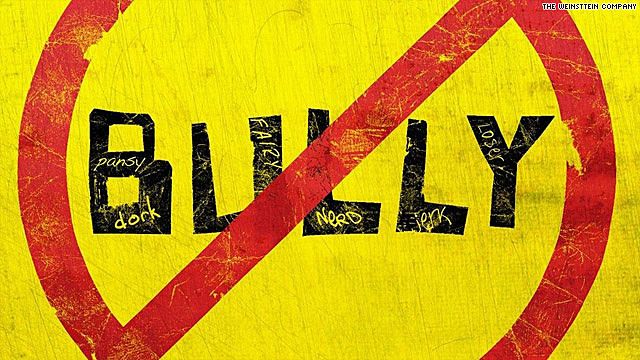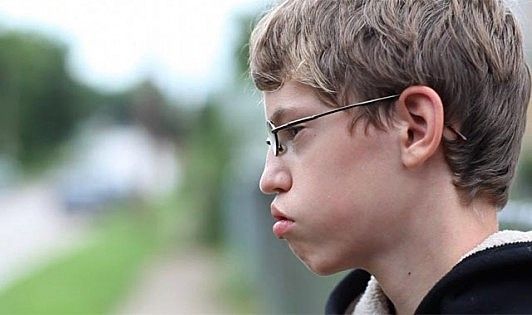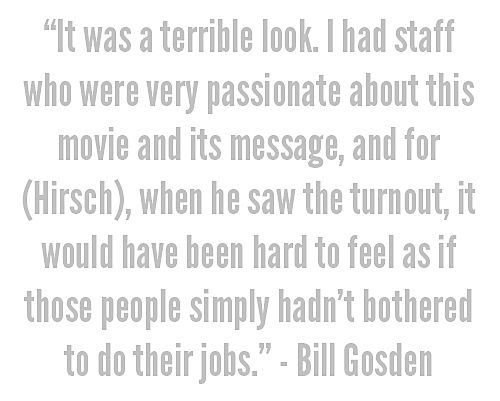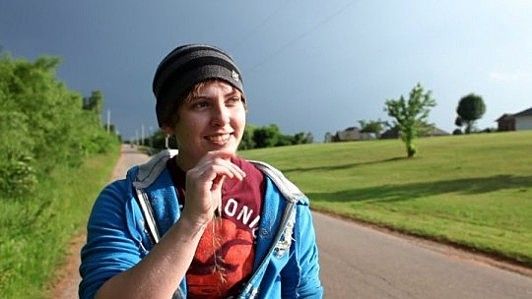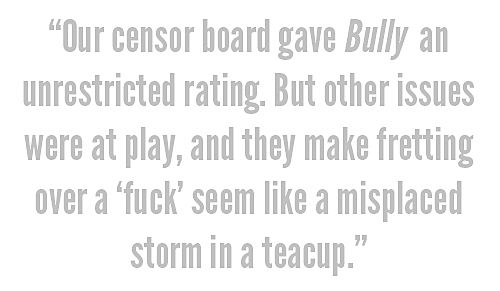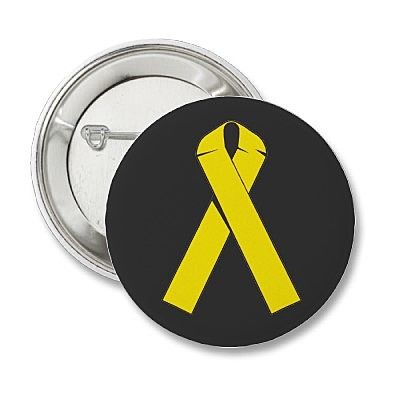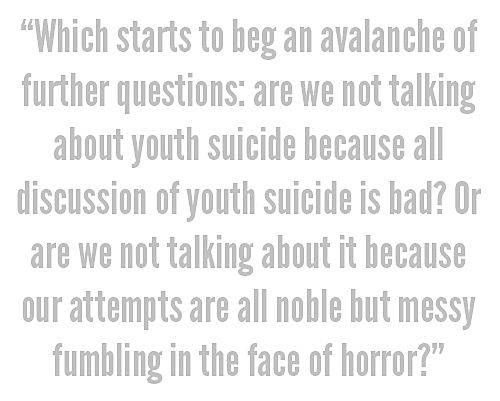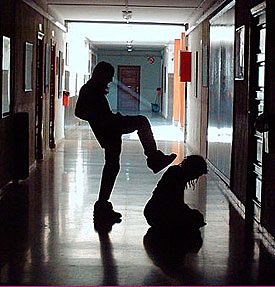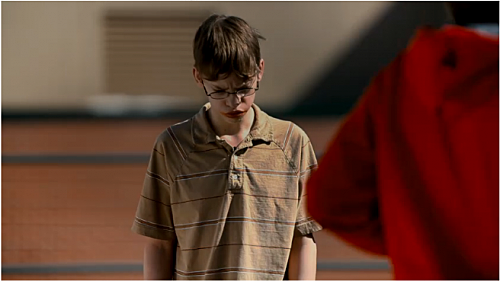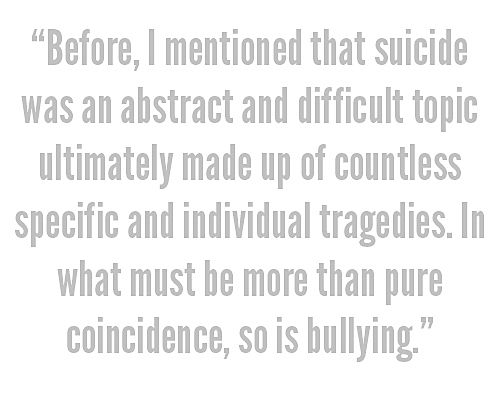Swearing, Suicide and Silence: When ‘Bully’ Came To New Zealand
Bullying is a big issue in NZ - or at least, we talk about it enough - so why did the most-acclaimed film about it in years bomb here? A walk through soft and hard censorship, the policies that protect our schoolkids, and the power of documentary to make us crusade without pause for thought.
The New Zealand International Film Festival screens about 160 films a year, and Aucklanders will be used to its revolving set of locations and the diverse genres they host. Temperate European comedies at the Bridgeway; diligent documentaries about performance artists at Rialto; raucous niche horror releases in a late-night session at Skycity. Different venues, different sizes, for different demand.
And then you have the Civic. With over 2000 seats, it’s the place where none but the most-acclaimed, most-anticipated, capital-I Important films make their New Zealand debuts to thronging crowds. Except when the crowds don’t show up. Except for when you end up sitting in an awkwardly small crowd of at the bottom of a very big theatre.
I saw Lee Hirsch’s Bully at a matinee on a blustery Saturday afternoon with about 80 or so other people – many seemed to be hardened festival completists, while hardly any were kids. For a Civic screening, it was a disaster – but everything pointed to it being a drawcard. Filmed over several months, it follows the lives of five young adults in the American South and Midwest who experience assault, abuse and social exclusion on a daily basis. A 16-year-old girl in Oklahoma comes out to her family and faces taunting from teachers and former friends; a 14-year old in Sioux City with Asperger’s syndrome runs a daily gauntlet of humiliations and beatings; a black teen in Mississippi sits in hospital under observation after sustained and systematic torment made her pull out an empty handgun on her crowded school bus.
Through it all Hirsch manages a level of access – from school buses, to dining tables, to principal’s offices – that draws us inexorably into these kids’ lives, into the systems that they rely on and that are failing them. Fuelled by publicity and controversy (more on that shortly) and backed by the Weinsteins, Bully received near-unanimous praise and made nearly $3.5 million at the US Box Office. Meanwhile, Hirsch, a victim of childhood bullying who had distilled his scope to individual stories from a blue-sky and big-picture ‘why do we bully?’ pitch, became called on as somewhat of an expert himself on the issue. Earlier this year, when revelations about Mitt Romney’s own chequered past as a high-school tormentor came out, he was one of the first approached for a personal response.
So Bully is usually seen by large crowds, and Hirsch, NZIFF director Bill Gosden says, “is used to seeing them”.
Gosden is, famously, a measured sort of a speaker – the sort of person you’d trust with your film festival’s various impresarios, its pensioner matinee crowds, and everyone in between. When I speak to him about Bully’s performance, though, there’s a certain tightness and an arid, exasperated guffaw. He’s annoyed by what happened. The Saturday matinee I attended was sparse. The day before, by all accounts, was even worse. “It was a terrible look. I had staff who were very passionate about this movie and its message, and for Lee, when he saw the turnout, it would have been hard to feel as if those people simply hadn’t bothered to do their jobs.”
In fact, they had been – connecting with myriad stakeholders, extending invitations to teachers, principals, Youthline, What’s Up and Rainbow Youth and others. The Friday session was a natural fit for field trips, and it was hoped this was where Bully would have its highest impact.
Gosden is quick to acknowledge that the NZIFF struggles to engage schools with its programme, but by any standard “it was incredibly discouraging for both us and Lee. There were a lot of non-responses, and then there were a number of polite but firm refusals, principals and teachers who simply balked. In the end, two schools (Orewa College, and a Northland school –so they put in the miles) turned up.”
What happened? It’s not as if Hirsch’s film had been released to an atmosphere of disinterest. In the past twelve months, New Zealand’s school bullying problem appears to be moving both newspapers and policymakers. The New Zealand Herald dedicated a solid week of features to the issue in May; in June, the Ministry of Education launched two websites (WellBeing@School and Positive Behaviour For Learning) designed to help schools foster safe and secure learning environments free of physical and psychological violence. The timing was right.
As it turns out, Bully was as incendiary here as it was in the US – but for different reasons. Theirs seems absurd. Ours, on the other hand, is pretty thorny and troubling, opening a can of worms Hirsch’s film never intended to be the last word on. In the end, I feel like I vindicated the work of Gosden’s staff. The film, it turned out, is a harder proposition.
Bully presents children and young adults on their turf – in some sequences, aside from Hirsch and a Canon 5D Mark II, there’s no teachers, no parents, no authority figures in earshot. So, yes, they use the word ‘fuck’, and they use it with terrible schoolyard precision. This won’t be a source of amazement or shock to anyone who has ever set foot in a schoolyard (that’s most of us), but it was to the Motion Picture Association of America’s Classification and Ratings Administration, which gave Hirsch’s film an R rating for offensive language. Overnight, legal access to the film was removed for anyone under 16.
The MPAA offered to reduce the rating to a PG-13 if Hirsch and the producers paid penance to the swear jar, but the film’s supporters at virtually every level (Congress included) stood firm. Hirsch, I would venture, had it right:
The small amount of language in the film that’s responsible for the R rating is there because it’s real. It’s what the children who are victims of bullying face most days. I know the kids will come, so it’s up to the theatres to let them in.
Bully’s kids are not secret wunderkinds waiting to flourish (though they are talented and spirited), and there’s no moment of epiphany where they obtain popularity and acceptance. Parents, teachers, principals and even police scrabble for rationales, defenses and solutions and in many cases don’t have any. There are no cathartic consequences for any particular bully – nor should there be, as Hirsch appears to recognise bullying as fundamentally and terrifyingly structural, a dynamic social interaction rather than a matter of correcting or excluding one ‘bad kid’ antagonist. In all these senses, it’s a real film about something that still gets trivialised and oversimplified, both in other media and in society.
In the end, but with a point well proven, the Weinstein Company pulled a few of the less essential ‘fucks’ from the final cut with Hirsch’s blessing and Bully entered 25 domestic US markets with a ‘PG-13’ rating. MPAA Chairperson Joan Graves stated that ‘the ratings system had worked exactly as it had supposed to: parents have been informed of the content of each version of the film, and they have been given the information they need to make movie-going decisions on behalf of their kids’.
This neglects the absurd arithmetic – that while the central US film classification board no longer tallies nipples or stabbings, it does the same with profanity:
A motion picture’s single use of one of the harsher sexually-derived words, though only as an expletive, initially requires at least a PG-13 rating. More than one such expletive requires an R rating, as must even one of those words used in a sexual context.
To us, this seems like some strain of puritanical madness. Our own censor board doesn’t take the same anal-retentive approach to bad language (In The Loop could be seen by anyone over the age of 13, for example). It’s a shocking double standard – the looser subjective approach adopted on violence and sexual content allowing all sorts of quiet cultural endorsements of cruelty, misogyny, and homophobia through the door while swears (which we can count) trigger what can be seen by a kid and what can’t.
Our censor board gave Bully an unrestricted ‘M’ rating. But other issues were at play, and they make fretting over a ‘fuck’ seem like a misplaced storm in a teacup.
Bully talks about suicide before it even broaches its titular subject matter – before a single word is spoken, in fact. Its opening shot is shaky home-video footage of Georgian teen Tyler Long as a young boy, beaming ear-to-ear and gesticulating with the sort of overwhelming ecstasy children of a certain age always get in front of the camera. The second shot is of a considerably older man, unmistakably Tyler’s father, his face wrought with the kind of etched-in grief that you only see on parents who have experienced the worst-case scenario.
Long, who took his own life at the age of 17 after protracted and violent bullying, also featured in an October 2010 story on the US edition of 20 / 20. It weds the themes less artfully (the opener: “Kids…being bulled…sometimes to death. It’s something you see in nearly every headline today!”) – in fact, being tabloid TV, it does virtually everything less artfully, including salacious details of Long’s chosen method backed with ominous synth music. At the beginning of September, the Herald reported on Epsom Girls Grammar School’s decision to play the segment in classes:
…principal Madeleine Gunn said the Auckland school had robust policies around suicide prevention and was aware of ministry reservations.
"We are very conscious of what is said and how suicide prevention is treated but the focus of this documentary was bullying and not suicide.
"This is how bad it can get because of bullying. It is saying we need to take it seriously because this can be the outcome."
Year 12 teacher Chantelle Fisher said she discussed the documentary with the class.
"It was an upsetting documentary but we were not focusing on the suicide," Fisher said.
"They are year 12 so it is an age level that is appropriate."
"This programme was on TVOne and I think at 8.30pm, so for 16 to 17-year-olds it is not unreasonable. "
The documentary was part of the "Keeping Ourselves Safe" programme that identified different types of abuse. It included bullying and self-defence lessons.”
(I’ll err on the side of good faith and say that the ‘bullying lessons’ implied by the end of the article are a Heraldism).
In fact, the 20 / 20 documentary seems to take a pretty prurient interest in the suicide angle – at one point, it sets my teeth on edge by using the word ‘epidemic’. But it is about school bullying, and Bully, while framed by the deaths of Long and 11-year-old Ty Smalley, is about bullying too. But it was those two suicides that spurred the polite but firm ‘no’ that Gosden received from schools. In the US, a board censored Bully for cussing. Here – a country with one of the highest youth suicide rates in the OECD – it feels as if we voted with our feet, treating the possibility of the discussion as some hellish incantation out of a horror movie. The prelude to the real thing.
New Zealand’s conversation about having conversations about suicide has waxed and waned for some time now. Twenty-somethings of a certain age and social practitioners alike will remember the Yellow Ribbon Trust. During its fraught seven years of existence (1998 to 2005) Yellow Ribbon aimed to highlight awareness of suicide in high schools, its causes, and methods of prevention. In between, it controversially took sponsorship money from a charity boxing match, went head-to-head with former Deputy Prime Minister Jim Anderton, and appointed hundreds of young ambassadors to help schoolmates under stress. In what might be the most anticlimactic disclosure of a conflict of interest ever, I was a Yellow Ribbon Ambassador at Mt Roskill Grammar School. The little badge I got was well-crafted and looked suitably reassuring next to my ‘Theatresports’ and ‘Cross-Country’ colours.
My ambassadorship was rudely interrupted. Though I had no inkling of it at the time, government departments wrote to schools over the course of 2003 raising doubts about the effectiveness of current suicide prevention programmes, that some of these programmes were harmful, that some increased suicide risk. That two (come on, how many were there?) were under investigation. We didn’t get the follow-up training sessions we’d anticipated.
Upon Yellow Ribbon’s demise in February 2005, Anderton conceded he had been warned off the Trust on advice from officials. “The literature is very clear – if you raise the profile of youth suicide you get a higher rate of suicide.” And by this measure, Bully – which extols the survivors alongside two beautiful, impossibly sad child martyrs, that raises a profile to raise its primary point – gets into all kinds of trouble.
Surprisingly, the most recent official guidelines on discussion of suicide in schools predate my high-school years –Madeleine Gunn and Epsom Girls Grammar are still expected to work from the instruction manual Jim Anderton would have seen ten years ago. If the fearful Comic Sans title page didn’t let on, Young People At Risk Of Suicide: A Guide For Schools was first published in March 1998. It advises that:
…programmes aimed at increasing the awareness of young people about issues of youth suicide are NOT undertaken….reservations have arisen about the efficacy of such programmes and of greater concern are suggestions that programmes directed at students may encourage, rather than prevent, suicidal behaviour. The concept of suicide may become normalised in the youth population and seen as a socially acceptable option for young people under stress. Rather the focus should be on recognition and appropriate response to mental health problems experienced by young people such as depression, abuse of substance, etc, within the context of the health curriculum.
We can see the big anachronistic worry here. Even if academic thinking hadn’t shifted on the matter in 14 years (and, frankly, I refuse to believe that from any live discipline) technology has. The only literature review you need for how young people discuss the untimely deaths of young people is to start typing ‘RIP’ and any given first name into your Facebook search window. Methods used, motivations, aspersions as to last thoughts and one’s own subsequent ideation can all be shared – as well as a strong sense of community. Considering the near-impossibility of censoring or even overseeing the Internet, the Ministry of Education’s dated silence on the matter is unhelpful at best and irresponsible at worst.
It wasn’t all bad press for Yellow Ribbon – a 2003 study by the University of Auckland’s prevention centre found that “Yellow Ribbon Ambassador training resulted in positive knowledge gains on how to seek help and perceived confidence in assisting peers” – though of course, it’s near-impossible to get a group of young people who might have utilized a peer support service in confidence and then get a sense of how much value they really saw. But in allowing this, it also cited a long vein of scholarship fearful of cavalier ‘peer support’ programmes that effectively left the lives of anxious and scared 17-year olds in the hands of other anxious and scared 17-year olds, and stylized programme materials with attractive actors and heady drama.
Which starts to beg an avalanche of further questions: are we not talking about youth suicide because all discussion of youth suicide is bad? Or are we not talking about it because our attempts are all noble, messy fumbling in the face of horror? Large parts of Bully are dedicated to showing those in charge trying to do the same with playground torment. There are scenes that can be barely be watched through your fingers – a deputy principal trying to pretend that a bully and victim’s dispute can be settled for a handshake and lecturing the latter for not buying in, or a health class where kids are asked to put their hands up and hold them up depending on how many friends they have. If you get it wrong trying to ‘fix’ bullying, trying to ‘fix’ suicide, should you be doing it at all? You can’t just do nothing. Can you?
Suicide as a looming and abstract and difficult topic is ultimately made up of countless specific and individual tragedies, and so as a public we tend to experience it ad hoc as these roll in, one by one. Clouding this all is a media torn between the obligations of a coronial process and the understandable need to file timely stories.
Jumping the gun and calling a suicide a suicide neglects both the feelings of families (who may not have accepted it yet) and the deliberative, careful procedure of an inquest – it also has practical ramifications for both ACC and private life insurance payouts. This is why the Coroners Act forbids particulars relating to the manner of death. Afterward, it asks that a lid be kept on the methodology unless the Coroner can find a compelling public interest reason to do so.
Legislation that affects reporting doesn’t stop to offer up an alternative style guide. In the interim, we get a lot of news stories with big, inane holes in them – spates of teenagers in quiet rural towns that ‘die suddenly’ like in the start of an X-Files rerun, young men who we are told were ‘too distracted by their phones’ before falling off a bridge. Compliance aside, this is bad writing, and bad writing perpetuates bad myths – during the Bully Q & A session, I was mortified to learn from a member of the audience that apparently because of the ‘media law’ suicide can never be discussed anywhere in NZ print or broadcasting on pain of heavy fines. This would be an easy explanation for our cultural issues. It would also be dismally factually incorrect.
For the record, the Chief Coroner Judge Neil McLean released annual suicide statistics on September 3 with cautious support for a national conversation:
“I continue to believe we need to gently bring the issue of suicide from out of the shadows. Coroners have a responsibility to encourage the informed public discussion about how best to reduce the rate of suicide.”
From some of the print reporting this month, particularly around young urban Maori suicide rates, it feels like there’s been a slow easing of the throttle. But the trickle-down process from a judge’s cautious support to a public discussion to what happens at schools is a slow one. I wondered what those principals I had seen at the screening made of it all.
Willowbank Primary School sits on the fringes of Auckland’s Eastern urban limit. Its zone bridges young Pakeha families, new immigrant communities, and the low-income homes of the former Manukau City. The signage outside proudly extols that it’s a ‘Cool School’ – the peer mediation programme originally developed by the Peace Foundation and delivered in NZ schools for over a decade. It socialises its students in three overlapping groups – classroom, year level, and a vertical awhina structure. The school has adopted a zero-tolerance approach to bullying, but there are no rules – just a system of values which they want the kids to hold and retain internally rather than obediently follow.
When I spend half an hour with principal Deidre Alderson, a child swoops past her door, beaming and herding an errant school cat. The school quad outside is full of happy, chattering charges. She seems to know a lot of their names. It’s a childhood idyll.
Alderson went to Bully with two other principals, but had no intention of bringing an entire class along. “Theirs is a question, I think, about how it’s promoted. There weren’t screeners, there wasn’t a preview before we made a call on whether to take kids along. All I’d heard is that the film was critically acclaimed, and that it touched on suicide.” This wasn’t a moral panic, but a professional decision: “At the end of the day, I didn’t know enough about the content of this movie. I would have loved my staff to see it. I wouldn’t have taken primary school-aged children to it.”
Willowbank School has seen plenty of the same gristle of childhood torment Bully touches on – Alderson can recall difficult conversations and decisions about children with anger management problems, children on the autistic spectrum, even a child who had displayed signs of suicidal ideation. She has no doubt that every educator should see the film. But we have to ramp well upward to agree on an age where she’s convinced youth should be doing the same.
“It’s a film for a mature audience. I don’t believe that most 9-year-olds have the capacity to process something like a discussion of suicide, and that’s apart from the fact that we have to be so careful about discussing suicide in schools. The guidelines are very clear.”
But – and this is important – it’s not just the mention of suicide that makes her question the suitability.
“Empathy is something that’s cultivated, and that we have to work hard to cultivate, and that development extends well into young adulthood. There’s that boy throughout the film with glasses and who is ASD (Alex Libby) – they’d see him, and they’d laugh at him. And somewhere in there the core meaning – the message of the film – would be lost.”
At the high end of high school, the Year 13 student leaders with resilience, maturity and empathy to handle the film? Sure. But that’s a big wait for the ten-year olds we watch eat their playlunch outside. Until a few years ago, the Ministry of Education‘s Special Education Group ran a programme called ‘Eliminating Violence’. Rather than relying on set content, it introduced an ongoing process where external professionals (psychologists, pedagogical experts) combined their efforts with schools to observe classroom and playground environments, then facilitate the school’s development of a response to the information. Their broad holistic sweep let them take in both the staff culture as well as student culture – a good comparative study of three schools that took part in the early 2000s can be read here. Alderson and other educators I listened to were effusive about it.
The exact fate of the programme is unclear, though. When I approached the Ministry of Education’s national office for comment I was told that decisions about the Eliminating Violence model were taken at the district office level and that national records of when and where the programme has been undertaken aren’t available. They suggested that it had been superseded by elements of the shiny new models for handling bullying, Wellbeing@School and Positive Behaviour For Learning. These depend more on the particular school’s uptake of set resources - Willowbank have taken up everything on offer and more. But there’s little certainty, no sense of a common thread, as their students graduate into the secondary system – public, private, co-ed, all boys’, all girls’, disciplinarian, laissez-faire.
A childhood idyll is still just that. She takes another long look out the window. “Sometimes we wish we didn’t have to let them grow up.”
I said I interviewed Bill Gosden, but he asked me a good question back.
“What did you think of Bully’s shift into campaign mode at the end?”
Short answer – I didn’t. At least, I hadn’t thought about it until then. But the film’s elegiac heft deserts it in its final couple of minutes. The oppressive unfairness, the palpable sense of how badly the educators and authorities get it wrong, the way that eventually, even the kids shamefully minimize what they’re experiencing - we cut to dozens of balloons aloft in moving symbols of solidarity and an on-screen imperative to join the movement and make a difference.
It’s a well-intentioned bid for the film’s legitimacy as an advocacy and awareness tool. But Gosden’s right.
“It felt like it had stumbled out of a different film,” I answer. Pause. “A clumsier one.”
Bully isn’t without its critics in the US, either. In Slate, journalist and legal academic Emily Bazelon has singled out elements of the film as ‘one-sided’ and ‘misleading’. She cites a lawsuit by Tyler Long’s family against the school county he attended that was thrown out pre-trial (the judge found the school’s conduct didn’t meet the standard for ‘deliberate indifference’ that would have allowed proceedings to go ahead), and to her credit, she’s one of the few US commentators that actually talks about the film’s handling of suicide in any depth.
In her view, Hirsch presents a direct line of causation between bullying and suicide in Tyler’s case that omits a mental health history that includes ADHD, bipolar disorder, and Asperger’s. She plays Bully to a senior project specialist at the American Foundation For Suicide Prevention (AFSP), and gets a well-articulated response:
From Haas’ point of view, by presenting such an incomplete version of the facts, Hirsch has created a real risk of suicide contagion—the documented phenomenon of people mimicking suicidal behavior in light of media representations. “I worry terribly about the contagion effect,” Haas said. “One message of this movie is: ‘Bullying kills’—as if it’s a normal response to kill yourself, when of course most people who are bullied don’t do that. Young people who feel bullied could harken back to the movie, and it could be a powerful draw to suicide for them.
I should note that the AFSP currently runs a youth campaign called ‘Suicide Shouldn’t Be A Secret’, so this isn’t an organization demanding a blanket ban on the whole conversation. They just want it done right.
And this means their concern is more nuanced, and so a lot more persuasive, and a lot more troubling. The problem for Bazelon isn’t that Bully discusses suicide; it’s that it does so recklessly.
Though I don’t agree with all of Bazelon’s points, the Bully team’s response to her questions does them no favours. Hirsch’s first response was to explain that in the Long case, he was presenting “the parents’ perspective” – faced with harder questions about why Tyler’s medical history and the absence of his school’s side of the story, he appeared to evade her questioning.
Bully shows us a lot of well-intentioned people in situations where they’re hopelessly out of their depth. And if you go trying to make a 90-minute film out of five different teenagers and their families and one big, terrible problem and keep it fluid, lean and potent, then there’re probably a lot of depths you’ll never be able to equip yourself for. Life imitates art woven from life, and we’re just left to re-evaluate it all in our heads.
Before, I mentioned that suicide was an abstract and difficult topic ultimately made up of countless specific and individual tragedies. In what must be more than pure coincidence, so is bullying. More and more, the idea of some grand statement or message for kids, or educators, or parents, or survivors starts to feel awfully glib.
Then I remember getting up as Bully’s credits rolled and being surrounded by glistening, tear-veined faces in the darkness. I remember the hyperventilating, trembling expressions of thanks from men and women who had spent years being tormented to within what felt like an inch of their lives. Despite the film’s narrative arcs, I mostly remember the constant, near-primal sensation of living in fear on lonely tarmac and dismal lockered corridors, of knowing most of what would happen went on out of a teacher’s sight and feeling like it would be too hard anyway. I remember being bullied between the ages of 11 and 15 so badly I would sometimes wet the bed, and I remember bullying in kind because I wanted so badly to shake off the exclusion, even for a moment, and feel like I belonged.
I embarked my follow-up of Bully’s NZIFF screening with the far-flung intention of capturing some sort of revelatory ‘gotcha’ about the Kiwi psyche and why it rejected the film. What I discovered was banal, but not mundane. I got to see how very two different media cultures handled the film and its content; I got the chance to bust some of my own myths about suicide coverage and get the lay of a tumultuous land; paradoxically, I came away both heartened and haunted about the environments today’s kids are growing up in – heartened by the good ones I saw and read about, haunted by how much of this may now be being left to chance and self-evaluation.
Most importantly, I found myself thinking much more critically about a documentary that had galvanized me into campaign mode without ever really realising. In other words, would I recommend this movie for most kids, most ordinary 14-year-olds? Of course I wouldn’t.
Most adults tend to be survivors, though they forget– and for us the film’s takeaway is still deeply worthwhile. It’s a salve and a salutary reminder. It acknowledges the hurt we felt more poignantly than virtually anything I’ve seen – but its painful reminders of how that hurt looks and feels should give us pause for thought in how we treat each other now. Our empathy slackens and the wounds scab over – we exclude others because it’s easier and safer, we congratulate ourselves for where we’ve got to, and then we bitch about it all in craven strategy behind each other’s backs. Hirsch narrowed his film’s scope from society itself to a set of individual children’s tales in an attempt to better make sense of it all – ironically, his flawed film’s parting gift may be to have us adults think about how we interact out there in the huge and impossible everyday.
Roadshow Distribution have no plans to give ‘Bully’ a general cinema run, though they indicate an Australasian DVD release is on the cards for early 2013.
